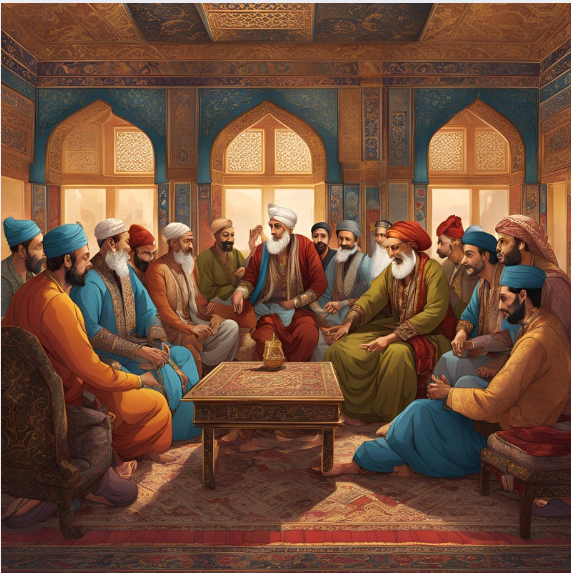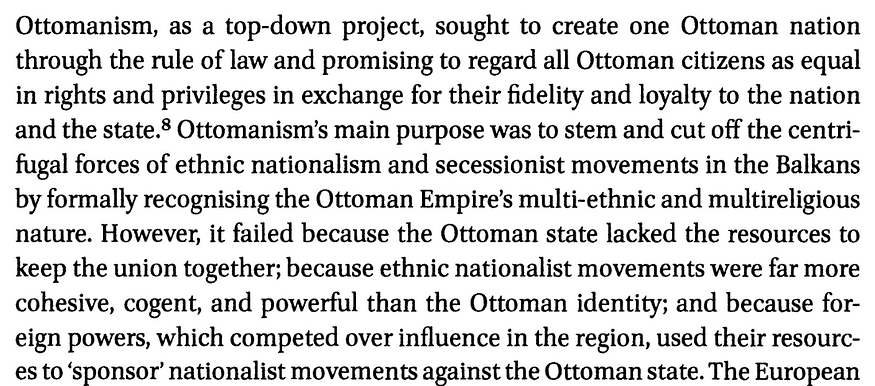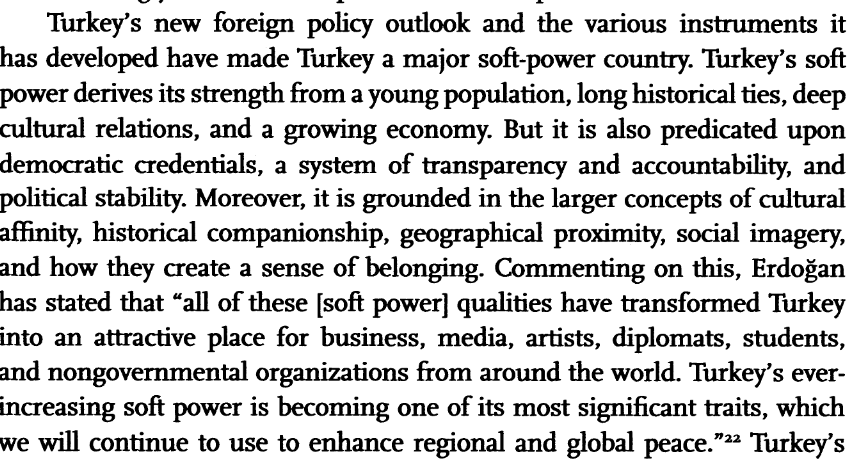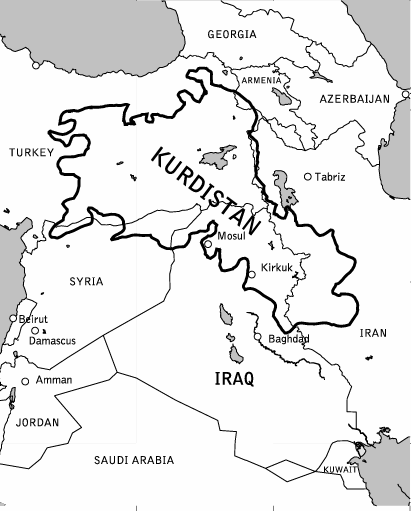According to offensive realism, States have to actively pursue their interests to ensure their completion and preemptively seek their fruition [1]. It, as a theory, states that ideology does not matter in international politics, only interests do, and within a certain geographic region as states want to become regional hegemon before great powers. The blind-spot it has is towards transnational ideologies of states who according to that ideology, seek to fulfil interests in regions that are not in their geographical proximity. Therefore, within the Indian context Offensive Realism is wholly inadequate. The transnational ideology, which is a threat to India and works as a foreign policy framework for another country, is Neo-Ottomanism. An ideology which seeks to restore the Ottoman glory.
Neo-Ottomanism

To understand Neo-Ottomanism, we need to understand the ideology it rose in oppossition to, namely, Kemalism.
Kemalism
Kemalism is the ideology based on the ideas and policies of the father of modern Türkiye, Mustafa Kemal Ataturk. He believed in the ideology of the New Turks, a group who wanted a republican and democratic Türkiye and can be characterized as a six arrow ideology or the ideology of six arrows. These specific arrows or pillars of these ideology are [2]:
- Republicanism
- Nationalism
- Populism
- Etaism
- Secularism
- Reformism
To understand both Neo-Ottomanism and Kemalism we need to understand what the notion of Ottomanism itself meant and how it came to be.
“It was devised at the end of the 19th century as a blueprint for saving the Ottoman Empire. According to Bedross Der Matossian, the very idea of Ottomanism as propagated by the Young Turks. At the end of the 19th century and the beginning of the 20th century was designed to curb the authoritarianism of Sultan Abdülhamid II and convince the Empire’s Christians, Jews, Arabs and (non-Turkish) Muslims that a common political identity and citizenship, as an imagined community of Ottoman citizens (albeit with a centralized government), could survive the ethos of the time, i.e. nationalism”. [3]
It ultimately failed in front of the nationalist sentiments of the ethnic minorities and the Turkish majority of the Ottoman Empire and the European powers who exploited these already present sentiments as a conduit to meddle in Ottoman Affairs [4].

From here, you can clearly see that Kemalism’s idea of secularism and reformism is inspired by this earlier notion of Ottomanism. Many of the decisions taken by Kemal Ataturk have their origin in the Ottoman period, especially the Ottoman period of reform, known as the Tanzimat reforms, which took place between 1839 to 1876.
The pillars of Kemalism also created many of the problems faced by the Modern Turkish Republic, namely Nationalism, Secularism, Populism, and Reformism.
Kemalist proposals and excesses
Nationalism led to the Modern Turkish State taking measures to suppress the identities of minority ethnic groups such as the Kurds and Circassians and put forth a Turkish National identity which was majorly based on the Turkish ethnic identity or the Young Turks Turkism [5]. Their policy of secularism also alienated many pious Turks and other Muslims as the Turkish variant of secularism is Laïcité or negative secularism, a form of secularism that forces religion to exit the public space. It resulted in the banning of Islamic clothing in public.
Populism can be summed up by Ataturk’s famous words: Ne Mutlu Türküm diyene (How happy is the one who says I am a Turk). While this was based upon citizenship, many used this as an ethnic marker which resulted in policies that disenfranchised the ethnic minorities. Reformism is a topic where Ataturk is the least to be blamed upon as this is where most of his ideological opponents attack him for being too radical. I do not agree with this, because most of his reforms were incremental, as they were just carried on from the Tanzimat period.
Some of his reforms were pushing for Western fashion, dissolving the caliphate, pushing for the Turkish language to be in the Latin script, pushing for uniformity, and pushing for scientific education. These reforms had some unforeseen consequences, which resulted in the debasing of the national identity with an ethnic identity as the push for scientific education led to unscientific theories such as the sun language theory and Anatolia being the cradle of human civilization.
The pushing for uniformity led to the armed Kurdish resistance and forced displacement upon which I shall expand on. The push for Western fashion and changes in language were made by even the Ottomans as well during the Tanzimat revolution. During the Tanzimat reforms, even the law code was largely secularised [6].
The ideology of Neo-Ottomanism was developed and synthesized as a response to Kemalism and its excesses.
Origin of Neo-Ottomanism
Neo-Ottomanism is not just an expression of Islam or Islamism in present Turkish politics but a redefining of the modern Turkish identity which is more sympathetic towards their Ottoman past and its glory. David Barchard who coined the term defines it as, “consciousness of the imperial Ottoman past”, which is a “more potent force in Turkey than Islam” because “as Turkey regains economic strength, it will be increasingly tempted to assert itself” [7].
It seeks to change the Kemalist interpretation of Turkish identity which was a move towards the rupturing of the said identity from its Ottoman/Islamic past and make the Turkish identity more conducive to its past heritage and ensure that the Modern Turkish republic takes stewardship of the said identity [8].
The first opposition towards Kemalism seeped in the form of culture, as the memory of the Ottoman past, more than its history, was being reconstructed within new opportunity spaces through the film industry, media, new architecture, art, music, and literature.
Yahya Kemal Beyath was a poet who provided an alternative imagination to Kemalist Turkism and was not anti-nationalist but instead disagreed with the Kemalist project of constructing a nation void of its history (Ottoman) and symbolic (Islamic) dimension. He argued that a nation is foremost an aesthetic reality, and the said aesthetic cannot be constructed void of the nation’s historical reality and symbolism.
This criticism of Kemalism was carried forward by his student. Ahmet Hamdi Tanpinar characterized Kemalist modernization as a forced and cultural erasure of the Ottoman past of the nation. He contended that this would lead to Türkiye becoming Western in character and giving up on its immense cultural resources and footprint across the Middle East, Central Asian, and Balkan regions.
He sought a form of Turkish Modernity where Ottoman cosmopolitanism was not forgotten. Diindar Ta§er (1925–1972) was the intellectual leader of Turkish Nationalist movement credited with bringing the Ottoman state back into the nationalist discourse [9].
Neo-Ottomanism became a part of mainstream discourse during the Presidentship of Turgut Ozal. During his prime ministership, he had already sowed the seeds of the ideology but the Bosnian Genocide in the year 1992 and the ignorant Kemalist response towards it led the pious Turkish populous to embrace the idea of Neo-Ottomanism in a much more vigorous manner [10].
From Ozal to now Erdogan, Neo-Ottomanism has become a potent force in Turkish politics and has changed much of the nation’s polity. The Turks see it as a way to end their ethnic separatist problems as most Kurds are pious Muslims and Neo-Ottoman Islamism helped bridge the ethnic gap with a religious and cultural bridge. The Turks becoming financially stronger led to them embracing the ideology as it had as much of an impact on foreign policy as it did on domestic politics.
Foreign Policy
The Turkish foregin policy was built on three pillars:
- No problem with Neighbours
- Using their cultural soft power as a foreign policy tool
- Strategic Geographical position (bridge between east to west)
Ibrahim Kalin, advisor to Erdogan, states that Turkish foreign policy in the 21st century is a mixture of realist and constructivist approaches and of “ideal-politik” and real-politik [11]. After the end of the Cold War, the Turkish foreign policy elite came to realize the threat from the Soviet regime had withered away, and to secure its security interest against the PKK and economic interests, they decided to project their power in Central Asia and West Asia [MENA], which were regions where the Turkic republic had historical influence.
Ethnic in Central Asia and political in West Asia due to the Ottoman Empire. This foreign policy formulation came to be known as Neo-Ottomanism. The earlier foreign policy of the Kemalists was seen as very narrow in scope as it focused entirely on the West and the new regime wanted to ensure that their Ottoman heritage be used for their foreign policy goals. They used their immense cultural heritage to show themselves as an ideal Sunni Islamic Republic and became a model for Central Asian and Arab nations [12].
They supported the Arab Spring and recognized the “revolution” in Egypt and Tunisia. This is not to say that the Ottomanists gave up on the West as Erdogan rallied a huge segment of the pious Muslim Turks for Türkiye’s EU membership in 2004 [13].
They also supported the Hamas government elected in the 2006 elections to show support for the democratic process that was undertaken in the Gaza Strip [14]. According to Erdogan, the reasons for Turkiye becoming more powerful and attractive as an ally for other nations are as follows [15]:

This is not to say that Turkiye has been entirely successful as the Arab Spring was largely a failure and their dream of being accepted as an ideal role model for other Arab states evaporated in thin air. Their ideological counterparts in Egypt, the Muslim Brotherhood, were hounded out of politics viciously [16].
The support for these “democratic” upheavals by Türkiye was seen by Arab monarchies as a new wave of Ottoman/Turkic colonialism and this led to tremendous friction between Erdogan and Saudi Arabia. The attempts by Türkiye to be seen as the new leader of the Ummah were seen as a rebalancing within the Muslim world which was not appreciated by the Saudis.
This led to a realignment from the West to the East, and Erdogan stated that, “Turkey is facing the West, but Turkey never turns her back on the East. We cannot be indifferent to countries with whom we have lived for thousands of years. We cannot abandon our brothers to their fate.” [17]
The Turks tried to use their cultural soft power by producing TV series about the country’s splendid past (The Magnificent Century) and producing soap operas depicting Middle Easterners as heroes rather than villains, as well as Middle Eastern women as emancipated (Giimii§)[18]. This worked particularly well in the Indian subcontinent and reignited the imagination of the subcontinental Muslims regarding the Ottoman Caliphate.
The Turks have also been focused on Kashmir and its “liberation”. This is a threat to the Indian State as the issue of the Caliphate ignited flames of Islamism in the nation over 100 years ago in the form of the Khilafat agitation and resulted in the massacre of Hindus of Malabar. The Turks are using this historical link of theirs to expand their influence within the subcontinent and this may lead to India facing security concerns.
Their economic situation worsening has not led to any change in their foreign policy as they have now used their military capability as a form of diplomacy in Africa [19] and showed their hard power in Syria [20].
A nation changes its foreign policy under the following reasons:
- Change in regime
- Change in economic conditions
- The foundation of their power crumbles
Choosing to wait out the present regime in Türkiye is not fruitful as it is too passive and submissive, the second reason did not affect their actions as even after record inflation in Türkiye, they continued with their policy.
Therefore, we need to ensure that their foundation of power crumbles, and the easiest way to ensure it is to seek to undermine the stability of Türkiye by animating their pre-existing security concerns and ensuring that the present regime loses their obsession with the Subcontinent and stop meddling in the region and focus on their own republic.
The Kurds

The above region is imagined as a homeland for the Kurds, called Kurdistan and it encompasses areas from various nations, such as Syria, Iraq, Iran, and Türkiye. ‘Kurdistan’ or the land of the Kurds was a term which first appeared in the twelfth century when the Turkish Seljuk prince Saandjar created a province of that name in modern-day Iran [21].
It was promised to them in the Treaty of Sèvres according to some but the Europeans betrayed them and the dream was crushed by Ataturk during his conquest for national reintegration for the Turkish Republic [22].
With the exception of Greece, the Treaty of Sèvres was not ratified by the signatory countries and the provision for Kurdish autonomy was thus never implemented. Sèvres had been seen as a humiliation by Türkiye and was repudiated by the new republic.
The aftermath of the Turkish War of Independence saw Sèvres superseded by a new accord in 1923, the Treaty of Lausanne, which largely established the current borders of Türkiye [23]. The Kurdistan Workers’ Party (PKK) claimed to fight for this dream of the Kurds in the 1980’s but now fights for cultural sovereignty and autonomy [24].
The Kurds, who are believed to number around 30 million, are widely believed to be the largest group of stateless people in the world. Despite this, they have maintained a strong ethnic identity for over two thousand years. As an ethnic group, the Kurds are the product of years of evolution stemming from tribes such as the Guti, Kurti, Mede, Mard, Carduchi, Gordyene, Adianbene, Zila and Khaldi,1 and the migration of Indo-European tribes to the Zagros Mountains some 4,000 years ago [25].
With regard to religion, the Kurds in Türkiye can largely be divided into two groups: Sunni Muslims and Alevis. 85 per cent of the Kurdish population is Sunni Muslim, while Alevi Kurds form the minority 15 per cent [26].
The Turkish Republic under Ataturk as stated above was built on six pillars or as their ideology is referred to, six arrows. They sought to create a unified, centralized and ethnically homogeneous state with a single Turkish identity, introducing dramatic reforms aimed at displacing the importance of Islam in society, placing the military at the core of the state and looking to the secular, industrial West for inspiration.
The Turkish identity was supposed to be built on the idea of a civic nationalism if Ataturk is to be believed but it turned into an ethnic one. “A necessary tenet of the ambition to achieve an all-Turkish national identity was the destruction of alternative identities through assimilation. Indeed, the dissolution of the Kurdish population in the Southeast became one of Atatürk’s main goals in realizing his ideal Turkish state. This was demonstrated in the failure to recognize the Kurds as a minority in need of protection or to acknowledge their language and culture under the Treaty of Lausanne; a measure still of great relevance today” [27].
The Kurds in Türkiye were brutally suppressed, politically, culturally and linguistically. The Kurdish language was banned in civil institutions and so were their traditional clothes and music.
An uprising led by Sheikh Said was crushed [28]. Some liberal reforms took place but were again rescinded after the 1982 constitution [29]. The Kemalists to impose Turkish Nationalism and unify the country under an ethnic Turkish identity decided to engage in forceful displacement of the Kurds from their traditional homeland.
These ideas were first translated into concrete strategies in the 1920s, as Atatürk’s ‘Turkification’ programme mandated, the first instances of forced displacement of the Kurds, accompanied by violence, abuses and the destruction of homes and property. The most devastating period of displacement, however, occurred in the wake of the 1980 military coup, against the background of the subsequent armed conflict fought between the PKK and the Turkish government [30]. This led to the growth of the PKK.
PKK
The Kurdistan Workers’ Party has been a militant group since the 1980s and has been engaging the Turkish State in a brutal and bloody armed conflict which has led to the death of over 30,000 people. It’s ideology was rooted in Marxism, it was founded by Abdullah Öcalan. Their actions did lead to some reforms, such as the reinstating of the Kurdish language in 1999.
It was also helped by the EU as the Turks wanted to join the Union [31]. It was also supported by the Syrians, but after 1999, Abdullah Öcalan was thrown out of Syria and Syrians declared them a terror outfit. Subsequently, Abdullah Öcalan was arrested. The violence after the reforms had subsided, but later became more pronounced before the 2012 election in which more than 700 people died[32].
The Kurds are also supported by the Americans and now Israelis (for Americans) after the Syrian episode of 2024 as the Americans are also fed up of the new policy positions of the Turkish republic. An attack was undertaken allegedly by the Kurds in October of 2024 and the PKK is a popular organization within the Kurdish community [33].
Therefore, if required, the functioning Subcontinental Republic can use the organization to ensure that foreign interference in the Subcontinent from Ankara ceases.
Footnotes:
- https://cshc.substack.com/p/offensive-realism
- https://www.jstor.org/stable/1601123?read-now=1&seq=12 pg[7–12]
- https://www.jstor.org/stable/24894003?read-now=1&seq=3#page_scan_tab_contents pg[3]
- https://www.jstor.org/stable/24894001?read-now=1&seq=4
- ibid pg 4
- https://www.jstor.org/stable/1601123?read-now=1&seq=5 pg[5]
- https://www.jstor.org/stable/24894001?read-now=1&seq=6 pg 6
- ibid pg 8
- ibid pg 10–14
- https://www.jstor.org/stable/1601123?read-now=1&seq=18 pg 18
- https://www.jstor.org/stable/23265962?read-now=1&seq=2 pg 3
- https://www.jstor.org/stable/24894003?read-now=1&seq=5 pg 5
- https://www.jstor.org/stable/23265962?read-now=1&seq=6 pg 6
- ibid pg 12
- ibid pg 13
- https://www.jstor.org/stable/24894003?read-now=1&seq=15 pg 15
- ibid pg 11
- ibid pg 14
- https://www.military.africa/2025/02/turkey-takes-control-of-abeche-military-base-in-chad/
- https://www.dw.com/en/recep-tayyip-erdogan-has-interests-in-syrias-reignited-war/a-70962033
- The Kurds in Turkey pg 5
- ibid pg 7
- ibid pg 8
- https://www.jstor.org/stable/resrep09446?searchText=PKK&searchUri=%2Faction%2FdoBasicSearch%3FQuery%3DPKK%26so%3Drel&ab_segments=0%2Fbasic_search_gsv2%2Fcontrol&refreqid=fastly-default%3Abbb003e2d4e80c49b2069377edfc8517&seq=9 pg 9
- The Kurds in Turkey pg 4
- ibid pg 6
- ibid pg 13
- ibid pg 14
- ibid pg 15
- ibid pg 76
- https://www.jstor.org/stable/resrep09446?searchText=PKK&searchUri=%2Faction%2FdoBasicSearch%3FQuery%3DPKK%26so%3Drel&ab_segments=0%2Fbasic_search_gsv2%2Fcontrol&refreqid=fastly-default%3Abbb003e2d4e80c49b2069377edfc8517&seq=4 pg 4
- ibid pg 5
- https://www.bbc.com/news/articles/crr957ee559o
Note: A version of the above article was originally posted here.













